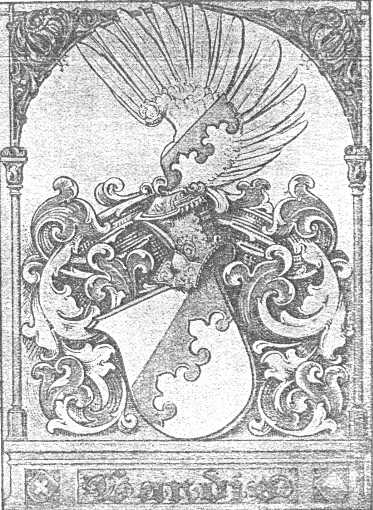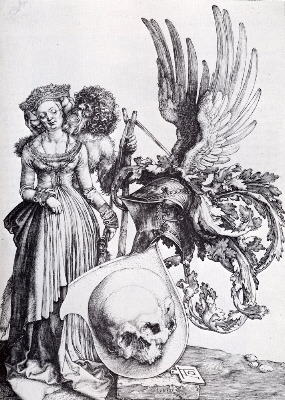|
|
|
|
|
|
|
|
|
| |
LANDIS FAMILY COAT-OF-ARMS [FORM 1]
LANDIS FAMILY COAT-OF-ARMS [FORM 2]
LANDIS FAMILY COAT-OF-ARMS [FORM 3]
This photocopy from the cover of the proceedings of the
17th Reunion of the Landes - Landis - Lantis Family,
dated 3 September 1932, Perkasie Park, Perkasie, PA.
The original of this image (probably very old, perhaps a wood-cut) is being
sought. Assistance welcome : email mcfarlat[at]uww.edu
Also see email from Philipp Majid-Landis
[From A Partial Genealogy of the Landis Family by Beulah F. Mumma
(1925) at Wis. Historical Soc. in Madison]
"Several years ago, when Miss Amy Du Puy was visiting the Landes
(National) Museum in Zürich, Switzerland, where hundreds of old
painted coats of arms can be seen, she called the director and inquired
whether there was a Landis family coat of arms there, which he politely
found for her in a large book of heraldry on his table. Miss Du Puy
states that most of the German arms are florid, highly colored ones, but
the Landis arms are very beautiful indeed, the two colors, only dark blue
and gold, looking very well together. With a rude sketch which Miss
Du Puy made, she states that the mantling is dark blue and gold, while
other parts are solid gold and others dark blue. The Norman sheild is
dark blue with gold trimming. The helmet is a strange German one. The
ribbons are dark blue and gold. Miss Du Puy is a neice of the late Col.
Jacob Hostetter, of Pittsburg (of Hostetter Bitters fame), whose mother
was Mary Landis."
This writer (Tom McFarland in 2007) believes that Amy
Du Puy was shown Form 2 of the Landis coat-of-arms
| |
Jane Hutchison , Department of Art History at UW-Madison, writes about the above image:
"The heraldry is of a common late-15th century type. The shape of the helmet
indicates that the owner was a member of the bourgeoisie ( thus not a nobleman),
and that therefore his coat-of-arms had been purchased rather than inherited,
and could not legally be handed down to his descendants. Such arrangements were
particularly common during the reign of Kaiser Friedrich III (the father of
Maximilian), who was ever short of cash, and the practice continued during
Maximilian's own reign, and probably beyond. The helmet shown here is the type
actually worn in tournaments with tipped lances--unlike the nobleman's
"spangenhelm", which had vertical, curved bars across the face and was only
useful for parading in, or for wear in the tournaments with clubs that were
all the go at the Imperial court." |
|
Gail Geiger, of the Elvejem Art Institute at UW-Madison, writes:
"Our curator of prints here at the Chazen suggested [the coat-of-arms above] image bears
striking resemblance to a prototype by Albrecht Dürer."
At the right are 2 engravings by Dürer
"coat-of-arms with a skull" (1503), and
"coat-of-arms with lion and rooster" (1500)
Also see Dürer helmet drawings |
|
|
|
|


